Art History - Quiz 2
1/41
There's no tags or description
Looks like no tags are added yet.
Name | Mastery | Learn | Test | Matching | Spaced |
|---|
No study sessions yet.
42 Terms
High Renaissance
The period between 1490-1527 in Italian art; characterized by an intense focus on humanism, naturalism, idealized figures, balance, and harmony
Idealized
A figure that is depicted as a culture’s idea of “perfection”; better than it appears in reality
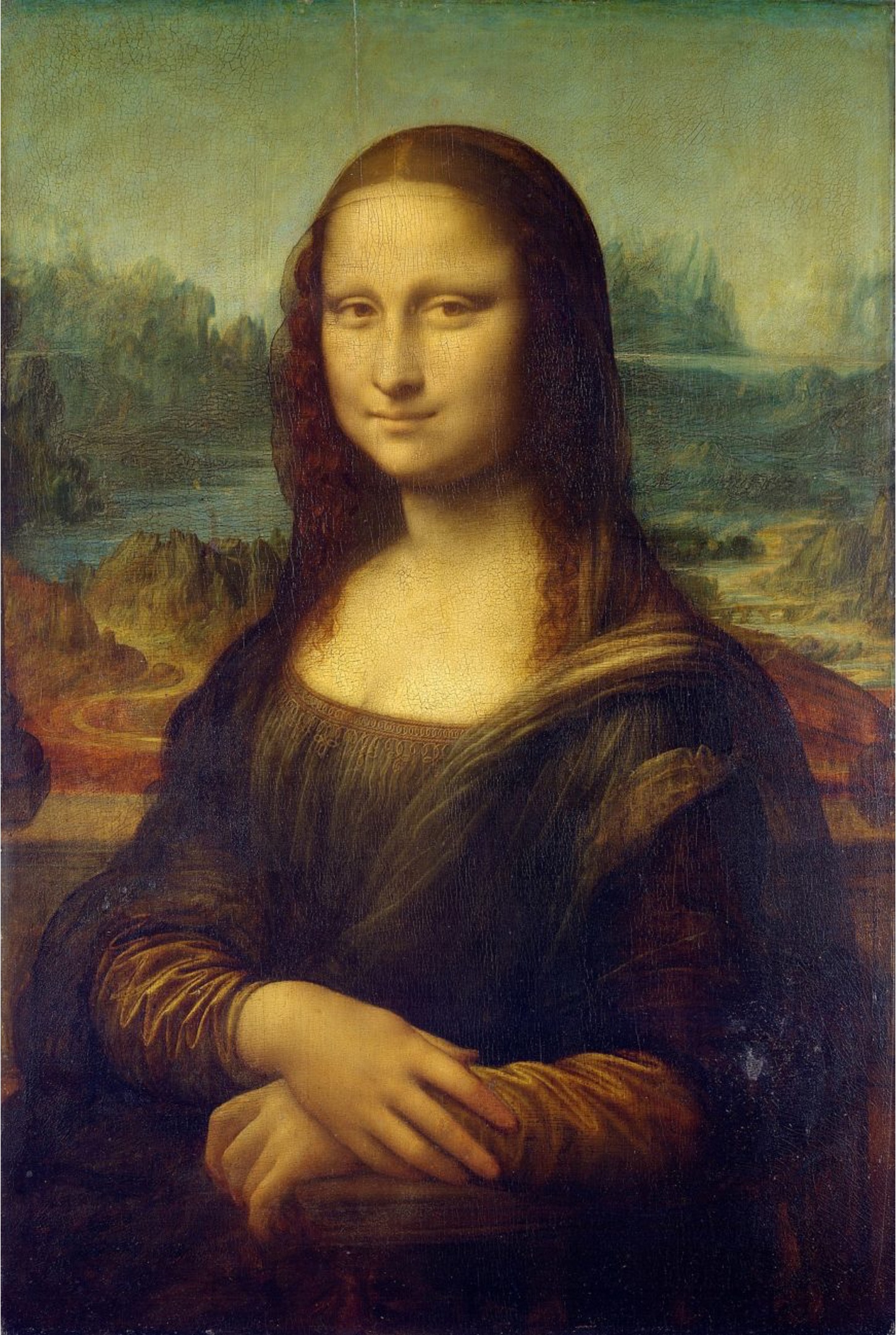
Leonardo da Vinci, The Mona Lisa - High Renaissance (1502-07)
Portrait of real person - commissioned by Lisa’s husband (Francesco) who never paid DaVinci so he never got the portrait
Use of sfumato - see it in Mona Lisa’ face and background (atmospheric perspective created using sfumato)
Sfumato
“To evaporate like smoke”; a painting technique that softens and blurs a subject’s edges
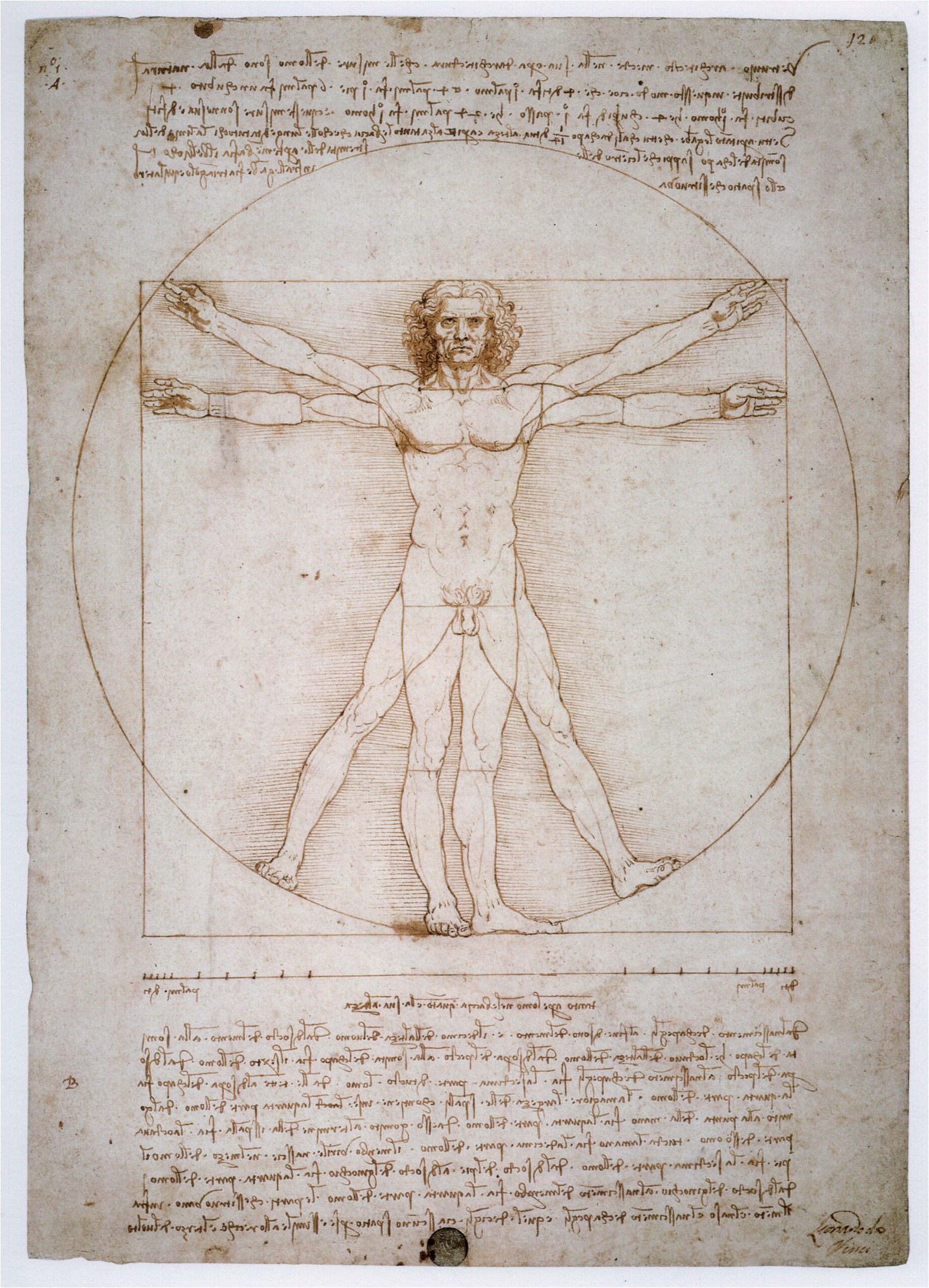
Leonardo da Vinci, Vitruvian Man - High Renaissance (1490)
Reference to Vitruvius - 1st century B.C. Roman architect and engineer; wanted to create manuals for architectures to build structures as orderly/rational as possible
Da Vinci used it for a harmonious, idealized man - drew on Vitruvius to create most rational, orderly man
Segmented body out for proportions
Pietà
A motif that features the Virgin Mary cradling the body of the dead Christ
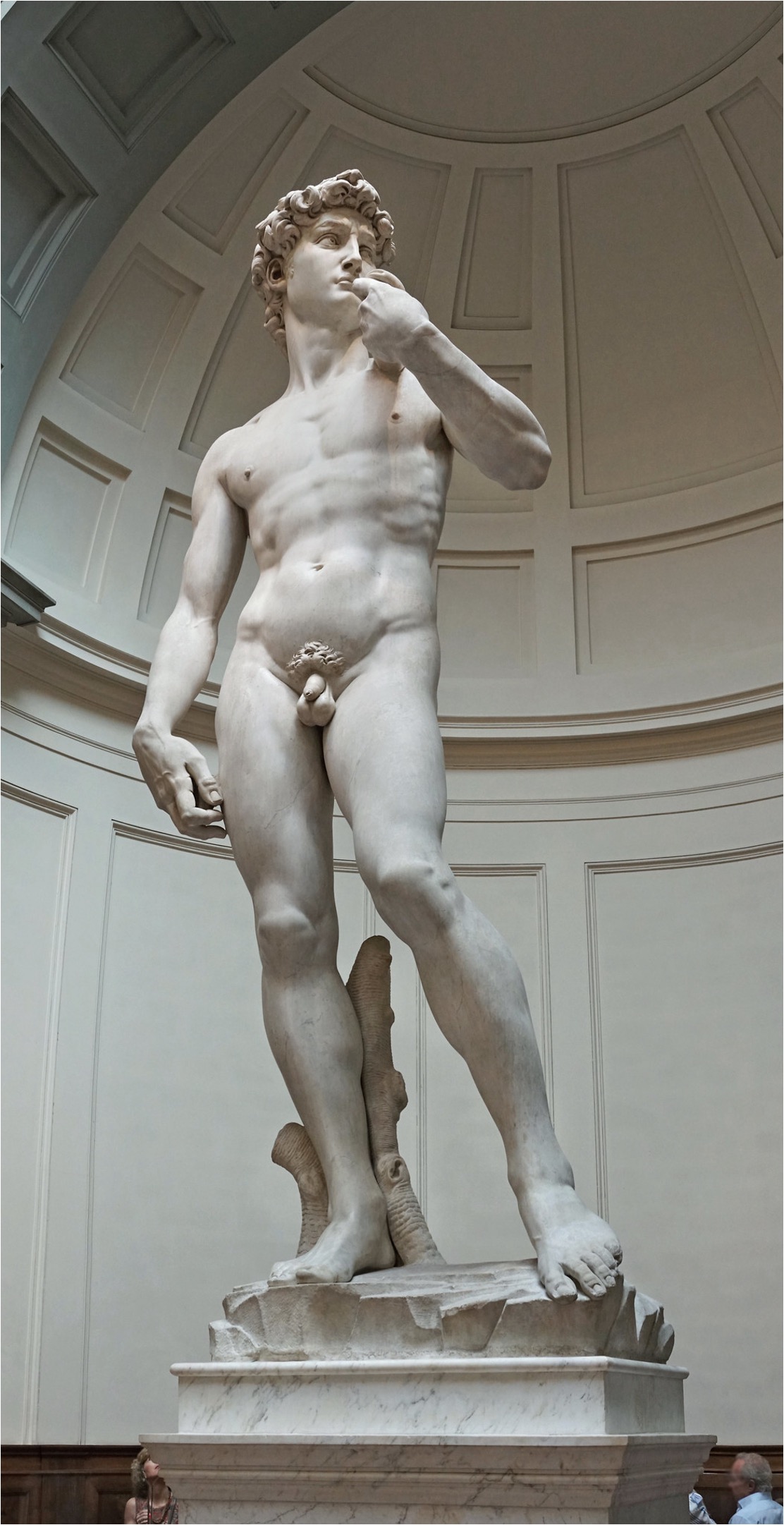
Michelangelo, David - High Renaissance (1501-04)
Originally made for the top of Duomo - Florence commissioned but changed mind before completion
Instead placed in front of Palazzo della Signoria
Placing statue of David here was potent symbol - Florence reclaimed David from Medici and placed him facing towards Rome (keeping eye on Medici in Rome)
Realistic but idealized man (contrapppsto)
The location of the sculpture changed its significance - meant to be religious but became a political work
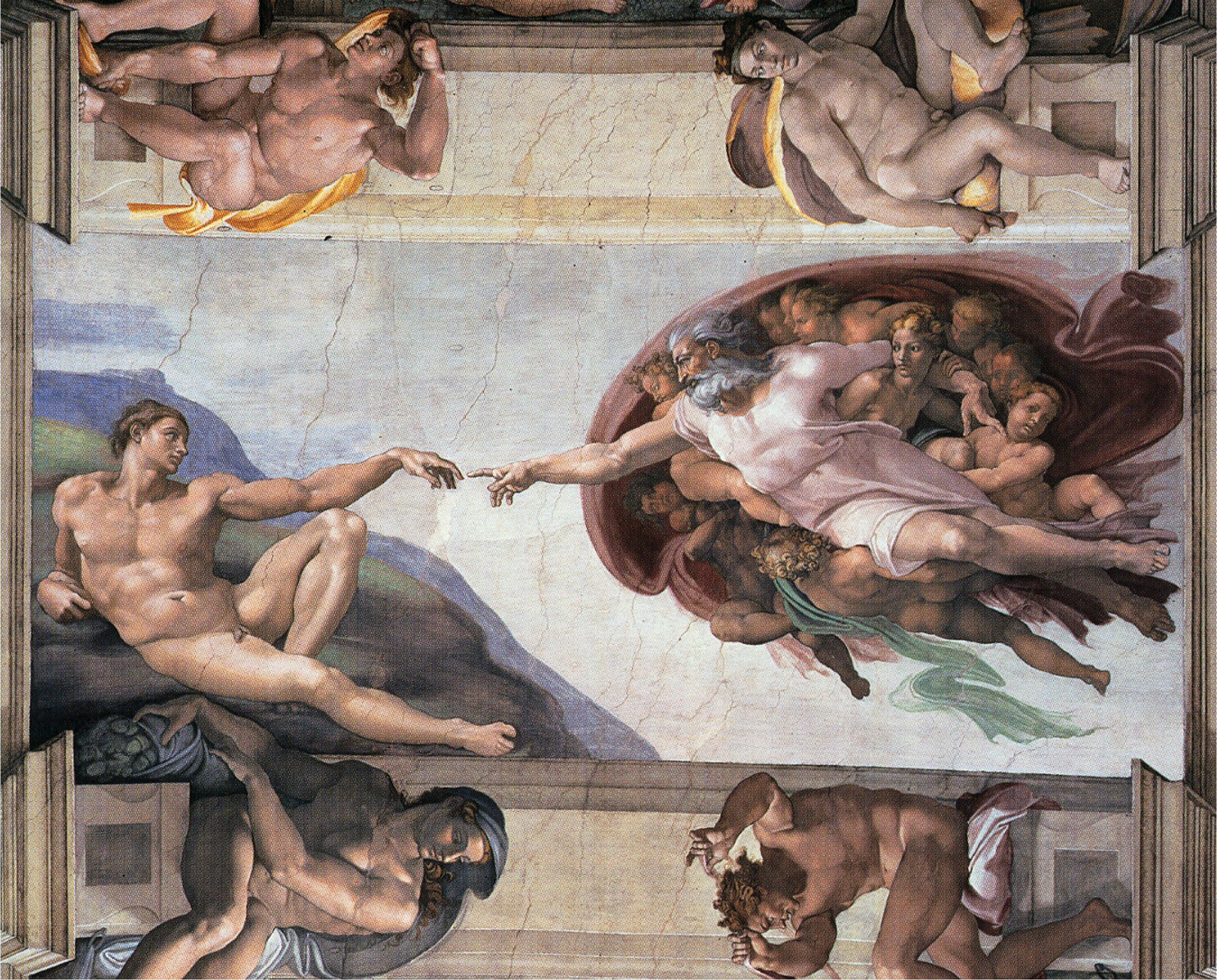
Michelangelo, The Creation of Man from the Sistine Chapel - High Renaissance (1490-1500)
Built for pope - the whole Sistine Chapel ceiling depicts Old Testament scenes
This work in particular depicts fall of man (almost touching fingertips with God)
Using diagonal line; eyes drawn to the hands - Michelangelo’s attempt to visualize relationship between human and divine
Humanism, naturalism
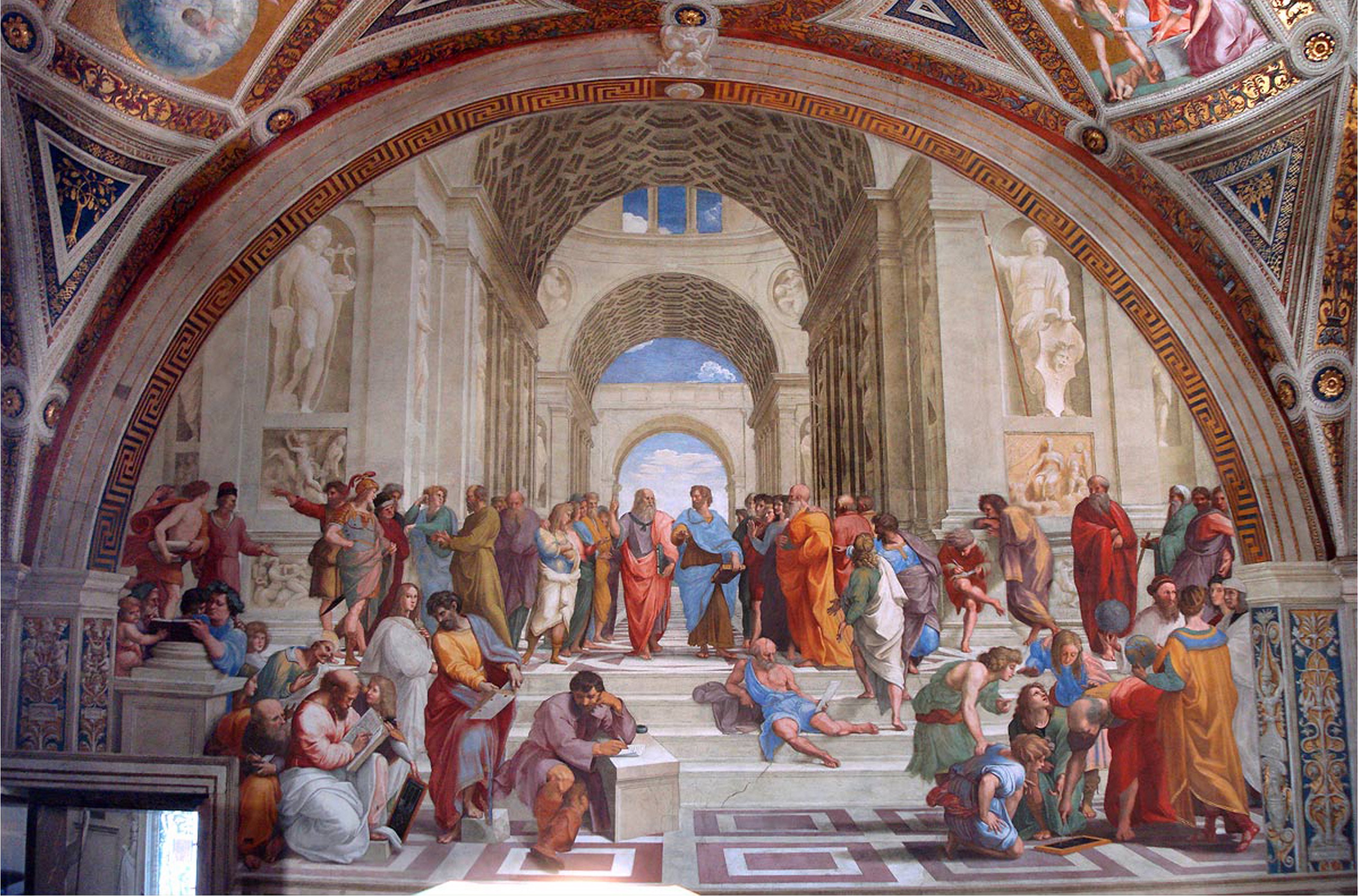
Raphael, The School of Athens - High Renaissance (1590-1611)
Commissioned by Catholic Church
Depicts classical philosophers - each figure is from Ancient Greece/Rome (Plato, Aristotle)
Classical antiquity
Using cast of characters from present to revive Greek and Rome as modern Italy
Contrapposto
Placing one’s weight on one foot, allowing opposite hip to rise; creates a relaxed curve to the body
Baroque
The dominant style in art and architecture of the 17th century; characterized by theatricality, emotion, dynamism, and realism
Counter-Reformation
“Catholic Revival”; the resurgence of the Catholic Church in the 16th and 17th centuries against the growing influence of Protestantism
Tenebrism
Darkened or obscured; a painting technique in which figures are spotlit within predominantly dark settings
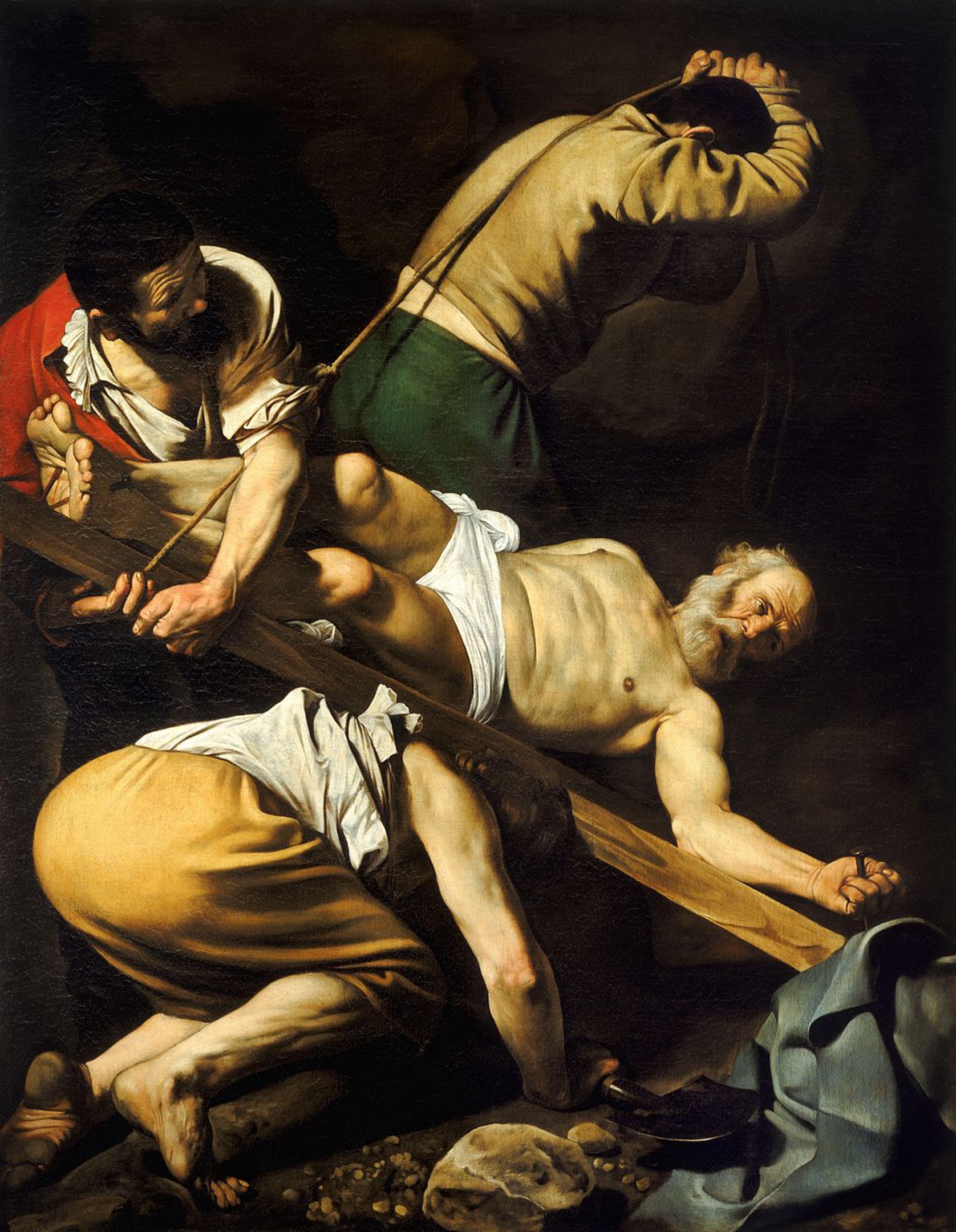
Caravaggio, Crucifixion of St. Peter - Baroque (1601)
Scene where St. Peter is crucified and elevated on cross upside down
Diagonal lines (almost like an X) opposite of pyramid in High Renaissance creates instability and movement
Using light to draw attention to St. Peters face (tenebrism)
Not idealized figures (characteristic of Caravaggios work)
Caravaggio was first major Baroque artist in Italy
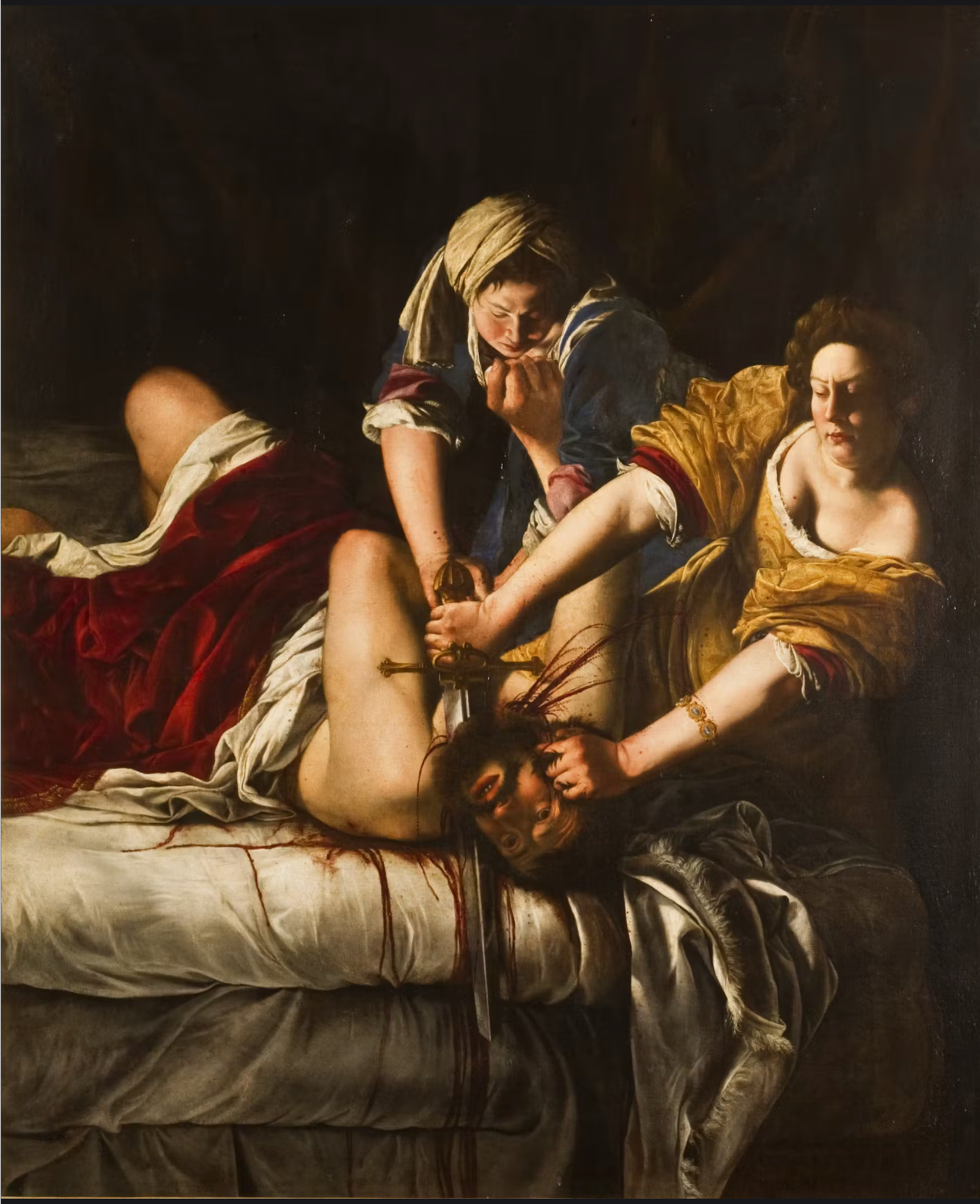
Gentileschi, Judith Slaying Holofernes - Baroque (1614-20)
Grabbing Holofernes by beard and taking his head off - less timid - maid is helping out so it is more realistic
Attacker of Gentileschi was exiled after he sexually assaulted her - explains rage and intention in this image
Gender + sexuality
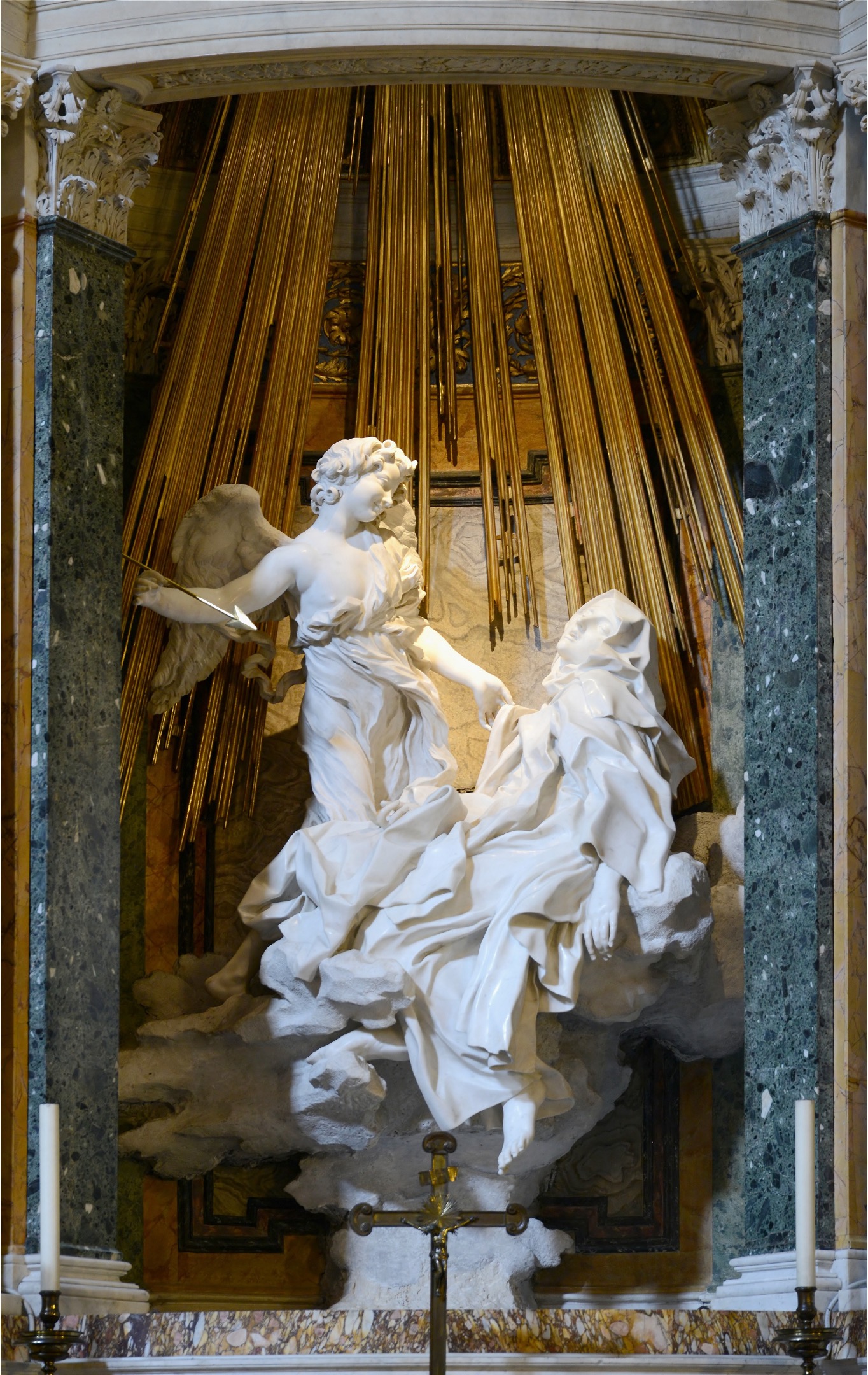
Bernini, The Ecstasy of St. Teresa - Baroque (1647-52)
Incorporates multiple art forms: sculpture, light, painting, Church aspects
Depicts St. Teresa - known for visions of angels
Meant to be understood as sexual
Angel pierces St. Teresa - orgasmic ecstasy (filled w/Gods love)
Included skylight to illuminate gold, gilded details - create tenebrism and sense of drama
Genre painting
A type of painting that depicts ordinary objects or normal people in everyday situations
Group painting
A portrait of several people, usually from a single organization or association
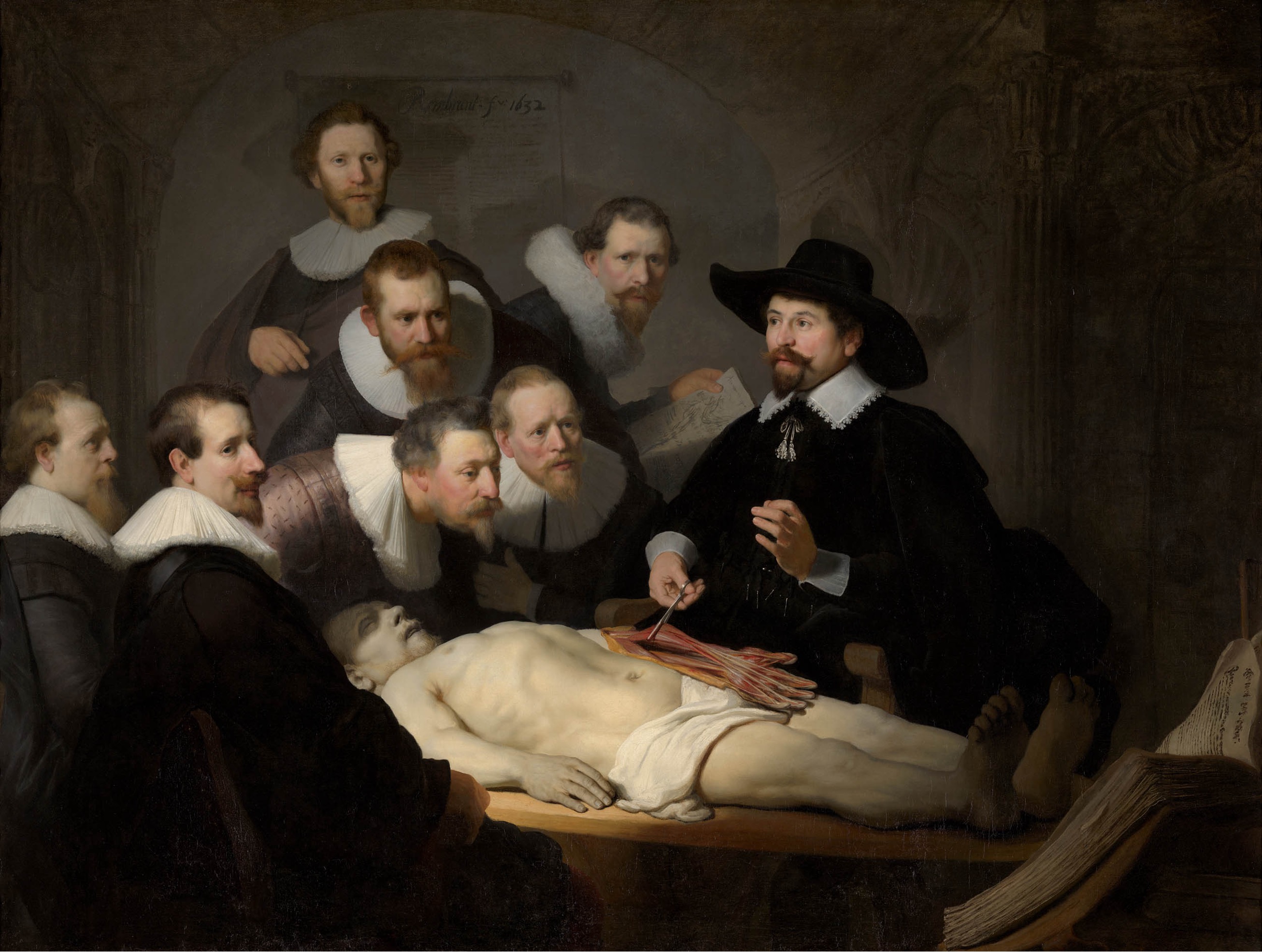
Rembrandt, The Anatomy Lesson of Dr. Tulp - Baroque (1632)
Dr. Tulp was famous for public dissections once a year - science taking place over religion
Dr. Tulp’s living hands pulling up on dead muscles of cadaver - juxtaposition
Reinvented group portraiture - cohesive whole group but each individual is own man
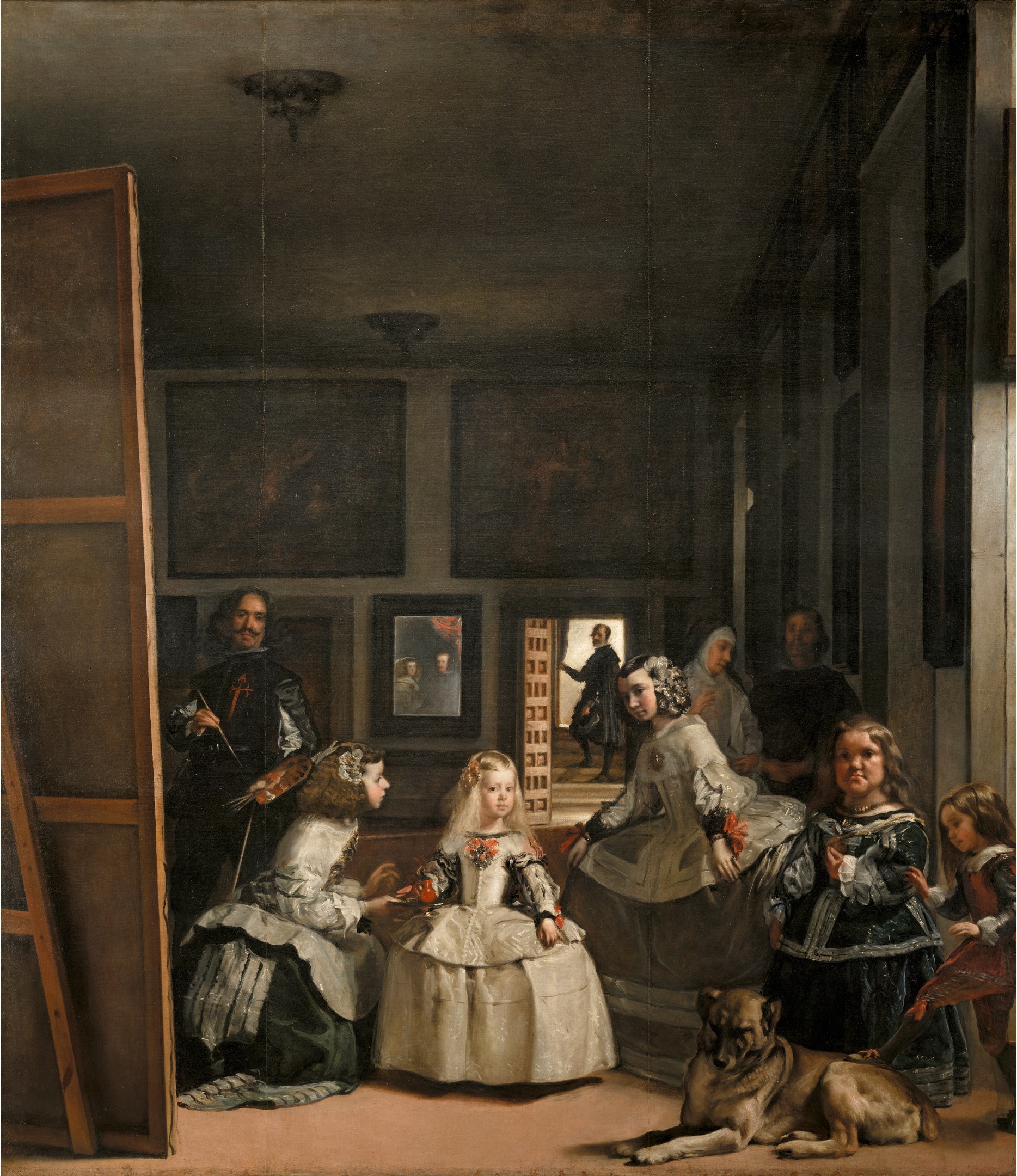
Velázquez, Las Meninas - Baroque (1656)
Depicts only surviving child of Royal Couple - surrounded by ladies in waiting
See King + Queen of Spain through reflection in mirror - very realistic
Ambiguity - what portrait is Velazquez painting? (King + Queen, Child) There is no clear answer
Velazquez also painted many pictures of individuals w/dwarfism realistically - gives them dignity
Rococo
An 18th-c. style characterized by lightness, opulence, sensuality, and the extensive use of curvilinear ornamentation.
hôtel
A grand city mansion or townhome.
Ornament
Decorative elements that are purely decorative, not functional.
Fête galante
“Courtship party”; a genre of painting depicting fashionable couples engaged in conversation and flirtation in idealized wooded landscapes.
Pastoral
An idealized portrayal of rural or country life.
Trophies
Wall ornaments of bundled objects that symbolically speak to the function of a space.
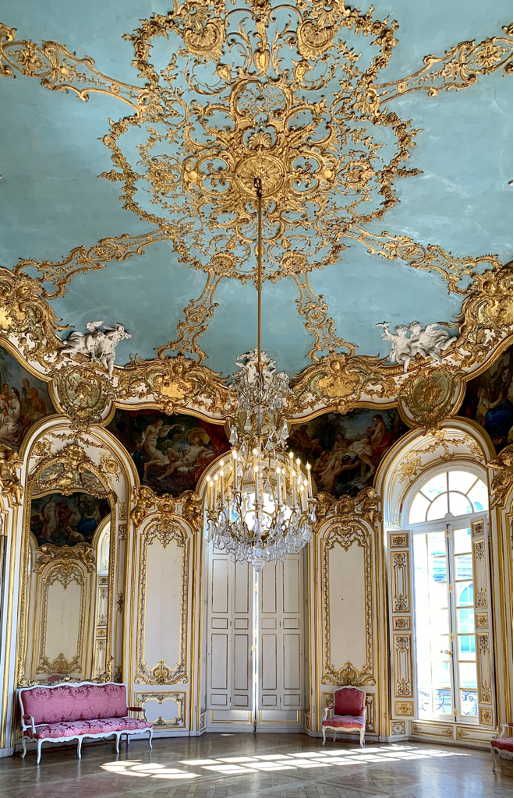
Germaine Boffrand, Salon de la Princesse - Rococo (1730s)
Grand architecture, large chandelier, light reflecting off mirros
Compared to Baroque - no dark background, light used sparingly in Baroque, Rococo uses light to fill a space
Removable wall panels, ceiling has symmetry (feature of early Rococo)
At end of Rococo people were interested in changing mood of space with color
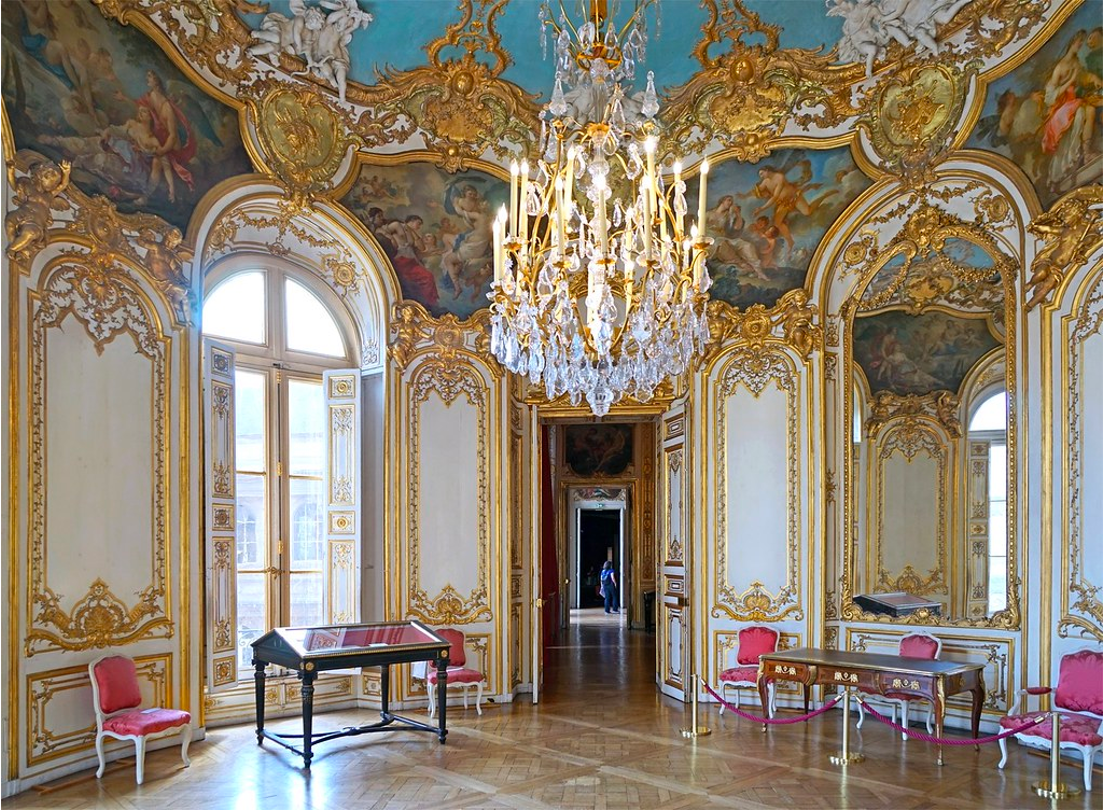
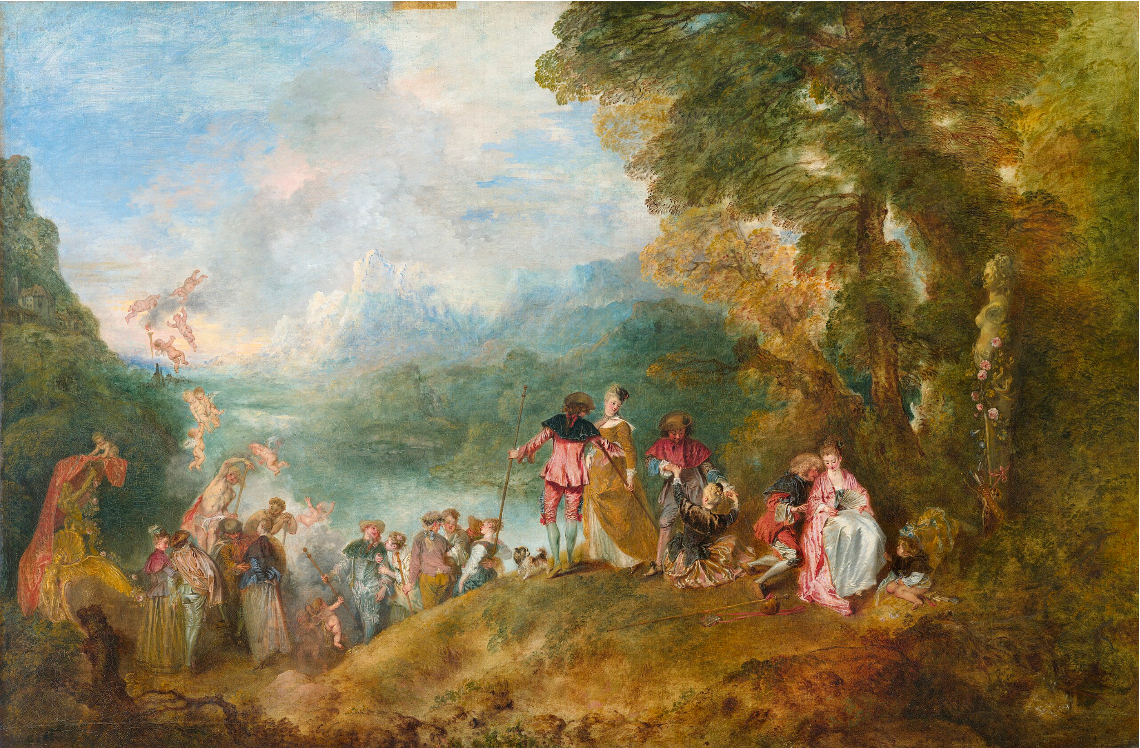
Jean-Antoine Watteau, The Embarkation for Cythera - Rococo (1717)
Entry for art academy
Cypher is land of Venus (birthplace)
People are paired off - went to Cythera for love
Use of fête galante
Watteau focused more on color than clarity (form)
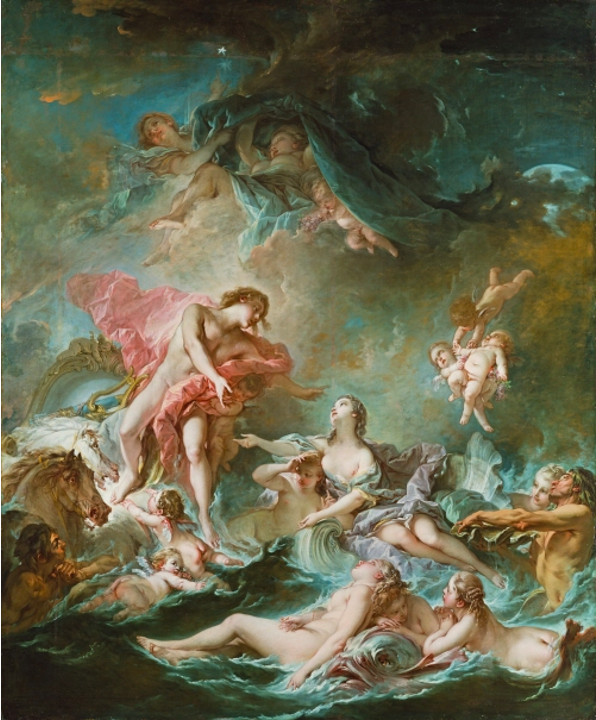
François Boucher, The Setting of the Sun - Rococo (1752)
Studies sent off to tapestry maker for Kings bed; Louis IV was “Sun King”
Depicts Apollo falling into arms of water nymph (classical allegories represents King Louis IV)
Louis falls into arms of mistress madame Dupompedour (?) - shows her status
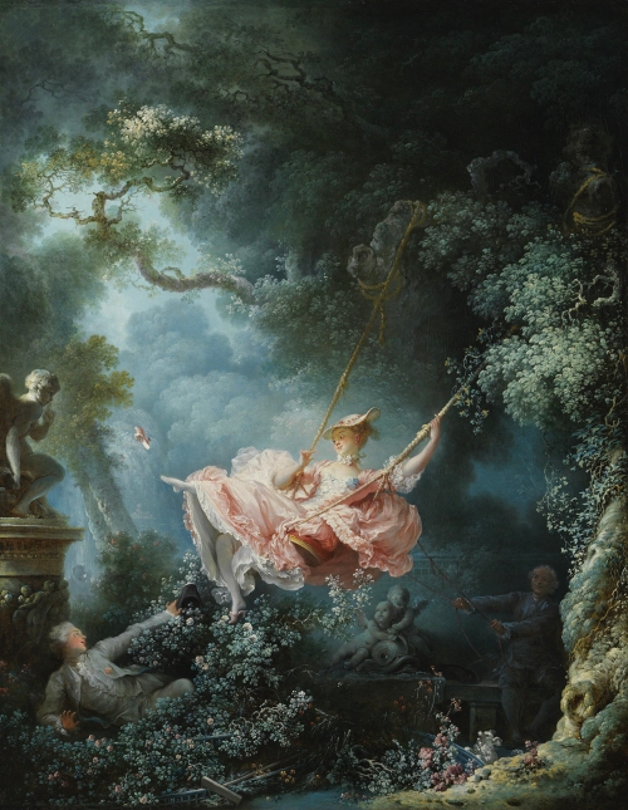
Jean-Honoré Fragonard, The Swing - Rococo (1767-68)
Most famous Rococo artwork
Depicting French mans mistress on swing and French man is looking up skirt
Classical statues - Cupid making shhh motion
Beautiful hazy landscape (dense wooded landscape)
Shoe kicked off foot for flirtation
Neoclassicism
A movement that began around 1750 as a reaction against Rococo; inspired by classical antiquity and Enlightenment ideals of order and rationality
Enlightenment
An 18th century intellectual movement emphasizing reason and knowledge of the world as a way to improve humanity
History painting
A type of painting that tells stories of “important” scenes from history, mythology, or religion.
Monumental painting
Paintings that are exceptionally large in size
French Revolution
A revolt occurring between 17879-1799 against the monarchy and Catholic Church; emphasized liberty, equality, and fraternity
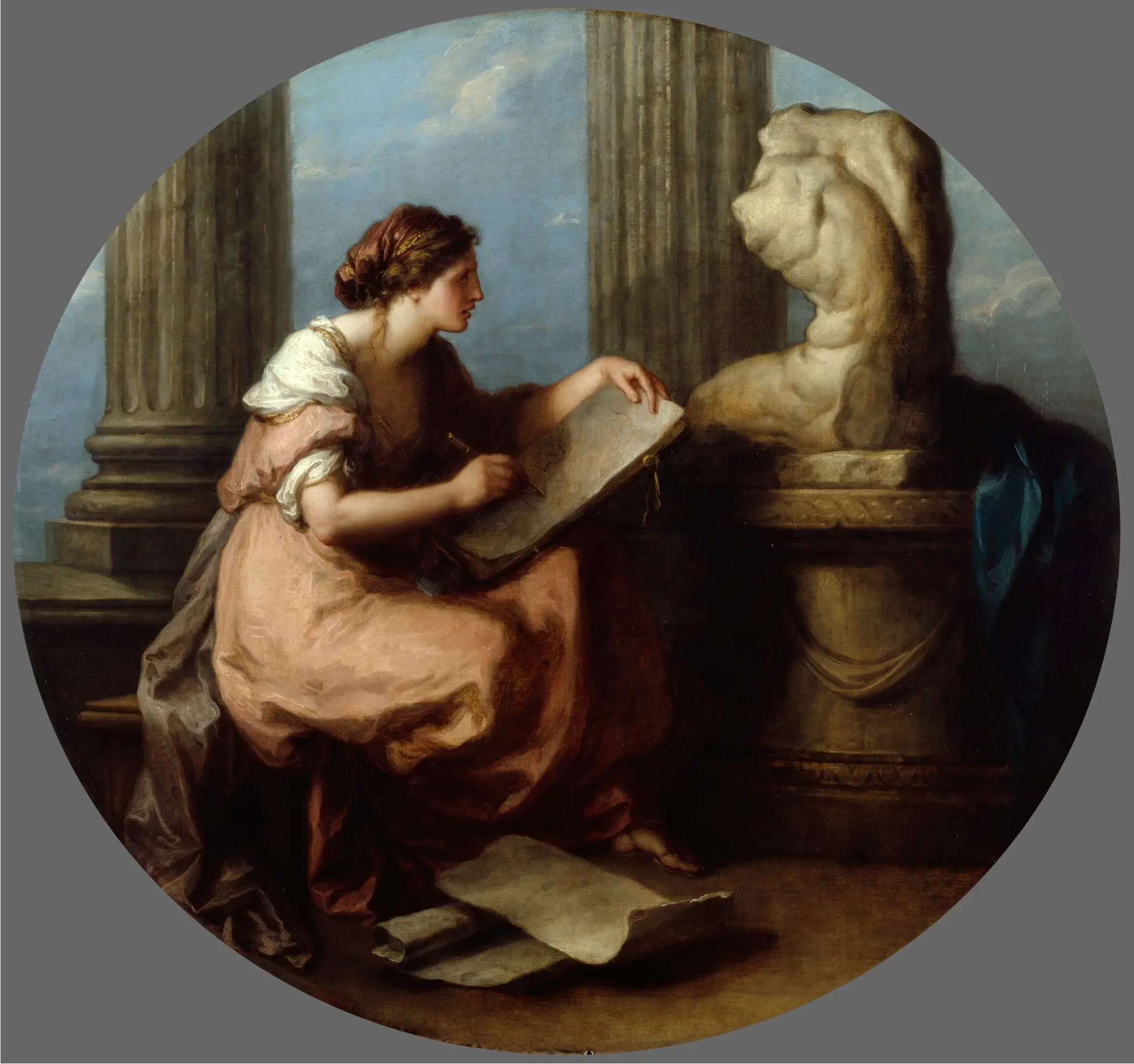
Angellica Kauffmann, Design - Neoclassicism (1780)
Not permitted to draw from nude body - women artists only depict human form by observing classical sculptures
Looking at live models not allowed - critics said her male figures were inaccurate and not anatomically correct
Exclusion - women didn’t have same opportunities
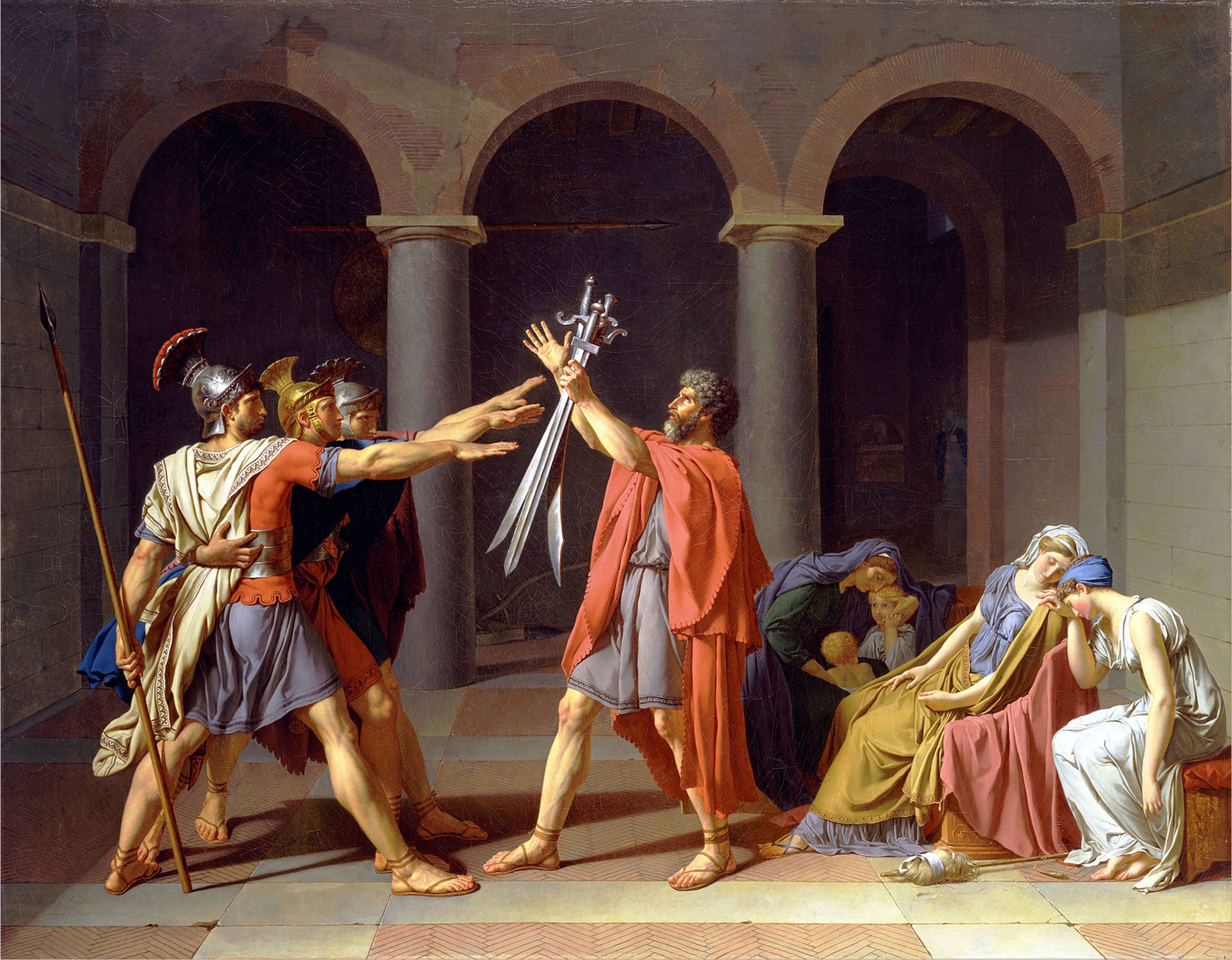
David, The Oath of the Horatii - Neoclassicism (1784)
Subject is Roman legend of 3 brothers sent to fight on Rome’s behalf - father sends them off to battle - they are sacrificing themselves for the good of their country
Showing patriotism, equality, liberty
David is suggesting this is what French Revolutionists should be doing
Differences in gender - women are sorrowful and soft (passive) men are stern and powerful (active)
Emphasis on masculinity - David going against Rococo - women bring France down (they are too emotional)
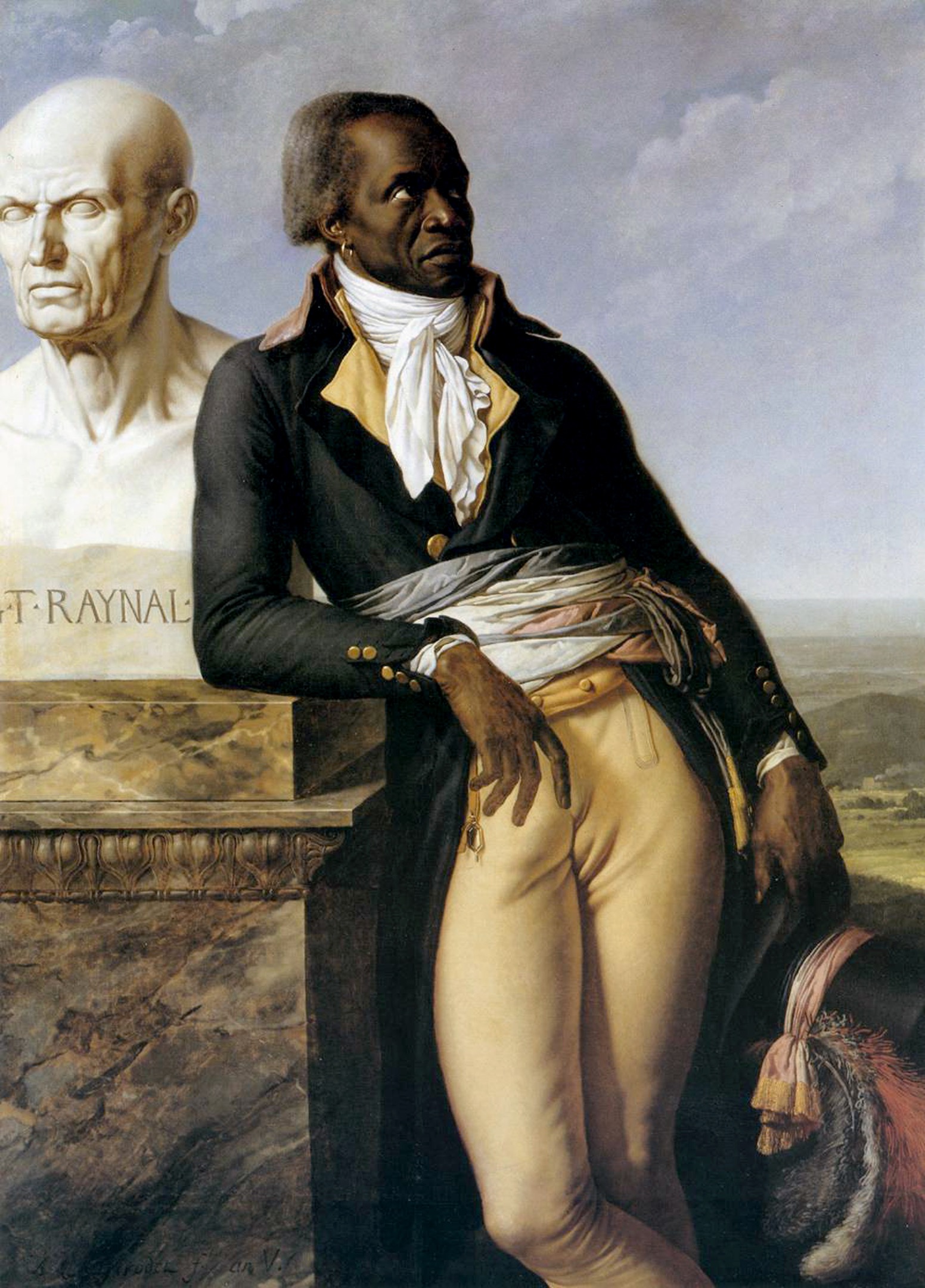
Anne-Louis Girodet, Portrait of Citizen Belley - Neoclassicism (1797)
One of few black portraits of this period
Slave rebellion wanted to abolish slavery - Belley campaigned for end of slavery in French Empire
Head in background looking away depicts Raynal (white abolitionist) - implies Belley’s accomplishments are because of Raynal
Belley not depicted in Paris
Bulge in pants shows racial differences (hyper-sexualize Belley in comparison to white men
Black people not seen as citizens of France
Romanticism
A movement that arose around 1800 as a reaction against Neoclassicism; varied subject matter, but united by an interest in the emotional, unusual, dramatic, and sensual.
Qualities: emotion, drama, bold color, loose facture, diagonal lines, intense atmosphere
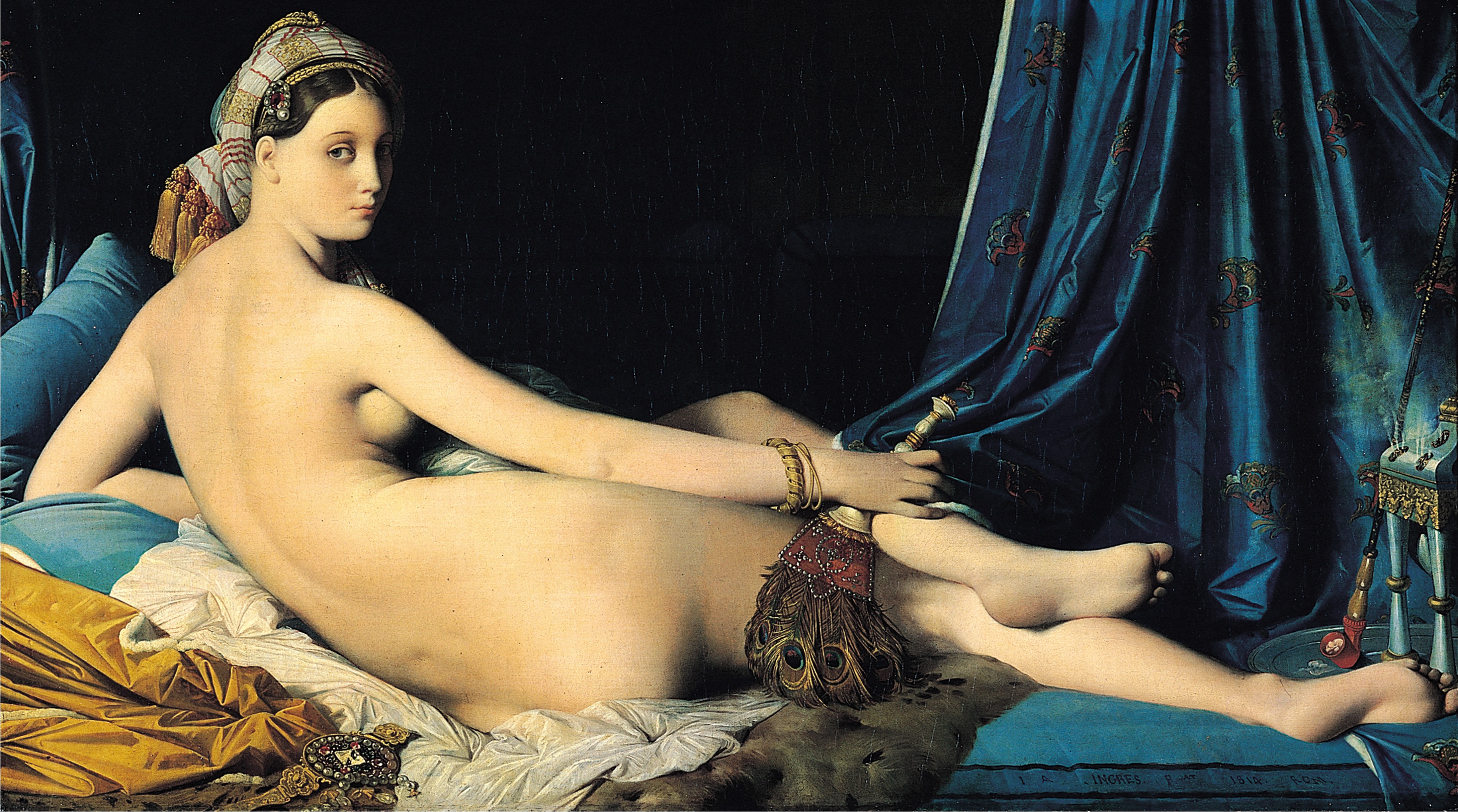
Ingres, The Grand Odalisque - Romanticism (1819)
Anatomy doesn’t look right (arms long, legs look weird, back is long)
Inaccurate nude female
Non-religious subject
Example of orientalism
Orientalism
The European convention of portraying “The East” as exotic, sensual, feminine, dangerous, irrational, and undeveloped. Usually linked to colonialism.
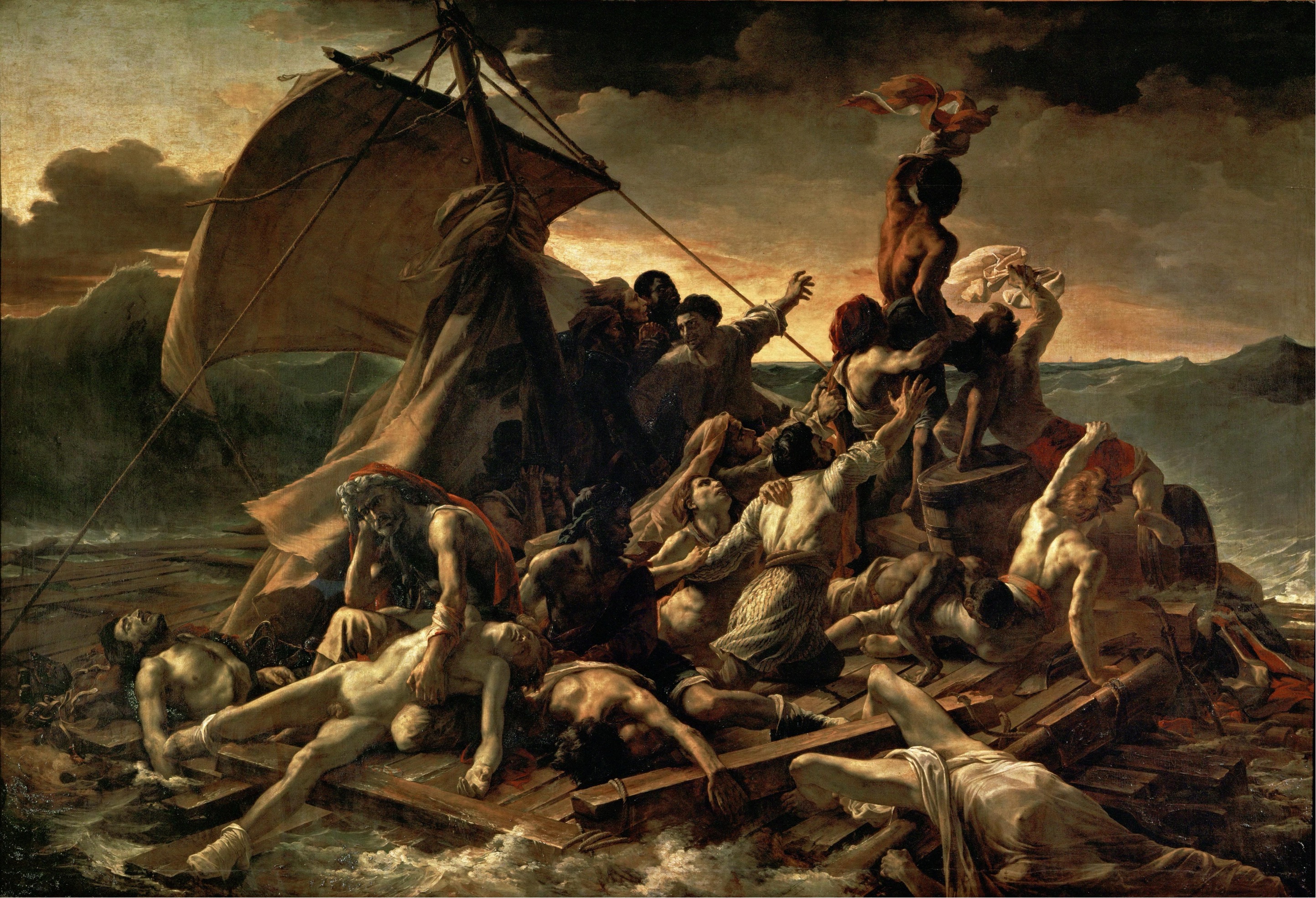
Théodore Géricault, The Raft of the Medusa - Romanticism (1819)
French ship sailing to Senegal to get Senegal as a colony
Shipwreck - 150 people piled onto raft for 13 days and only 15 people survived
Raft rescued by ship which you can see in horizon
Contemporary political commentary - French swept this under the rug because they didn’t look for people on the raft (French government failure)
Gericault memorializing this was a big deal